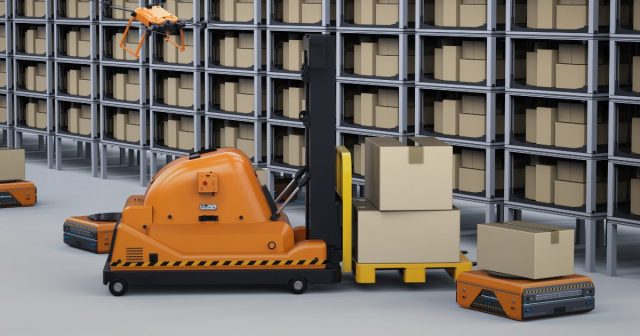
E-Invoicing and Its Geopolitical Stakes
France’s electronic invoicing reform relies on a Y-architecture, where Partner Dematerialization Providers (PDPs) play a central role in issuing and…
Generix Announces the Appointment of Olivier Vaillancourt as General Manager for North America View the press release

One of the most critical components of an effective omnichannel fulfillment strategy is unified inventory management. This approach involves integrating inventory data from all sales channels into a single, real-time system. Whether a customer is shopping online, in-store, or through a mobile app, they should have access to accurate product availability information.
Unified inventory management allows businesses to prevent common issues such as overselling or stockouts, which can negatively impact customer satisfaction. By having a consolidated view of inventory, businesses can make informed decisions about stock allocation, ensuring that the right products are available in the right place at the right time. This level of synchronization is essential for supporting various fulfillment options like ship-from-store, buy online, pick up in-store (BOPIS), and curbside pickup.

The backbone of any successful omnichannel fulfillment strategy is the integration of advanced technology systems. This includes Order Management Systems (OMS), Warehouse Management Systems (WMS), and Transportation Management Systems (TMS), all of which must work together seamlessly to manage the complexities of fulfilling orders across multiple channels.
A well-integrated system provides real-time data on inventory levels, order status, and customer information, enabling businesses to optimize their operations. For example, an OMS with distributed order management (DOM) capabilities can route orders to the most efficient fulfillment location based on factors such as inventory availability, proximity to the customer, and current demand levels. This not only improves fulfillment speed but also enhances the overall customer experience by ensuring timely and accurate deliveries.
Offering flexible fulfillment options is crucial to meeting diverse customer needs. This flexibility allows customers to choose how they want to receive their orders, whether it’s through home delivery, in-store pickup, or curbside pickup. Providing these options enhances the convenience and satisfaction of the shopping experience.
For instance, ship-from-store and BOPIS are popular options that leverage physical store locations to fulfill online orders quickly. By utilizing store inventory for fulfillment, businesses can reduce delivery times and lower shipping costs. Similarly, curbside pickup has gained popularity due to its convenience and safety, especially during the COVID-19 pandemic. These options are essential for attracting and retaining customers in a highly competitive retail environment.
A consistent and seamless customer experience across all channels is a hallmark of a successful omnichannel fulfillment strategy. Customers should be able to transition effortlessly between online and offline channels, with consistent branding, pricing, and service levels throughout their journey.
To achieve this, businesses must ensure that all touchpoints, from their website and mobile app to their physical stores, are integrated and aligned. This integration allows for features like online order tracking, real-time inventory visibility, and easy returns, all of which contribute to a positive customer experience. By maintaining consistency across channels, businesses can build trust and loyalty, encouraging repeat purchases and long-term customer relationships.
Returns management is an often-overlooked component of omnichannel fulfillment, yet it plays a crucial role in maintaining customer satisfaction. A seamless returns process allows customers to return products through any channel, regardless of where the purchase was made. This requires a unified returns policy and system that can handle returns efficiently, ensuring that the process is quick and hassle-free for the customer.
Effective returns management involves several key elements, including automated return labels, real-time updates on return status, and integration with inventory management systems to update stock levels accordingly. Additionally, efficient reverse logistics—such as refurbishing, repackaging, or redistributing returned products—can minimize costs and maximize recovery value.
Implementing a successful omnichannel fulfillment strategy requires a holistic approach that integrates inventory management, advanced technology, flexible fulfillment options, seamless customer experience, and efficient returns management. By focusing on these key components, businesses can enhance their operational efficiency, improve customer satisfaction, and gain a competitive edge in the market.

France’s electronic invoicing reform relies on a Y-architecture, where Partner Dematerialization Providers (PDPs) play a central role in issuing and…

The B2B mandate in Germany, set to take effect on January 1, 2025, marks a crucial step in the European…

Following the October 15 announcement regarding the abandonment of the PPF development, the DGFIP and its partner AIFE are ramping…

Work with our team to build your ideal supply chain software stack and tailor it to your unique business needs.